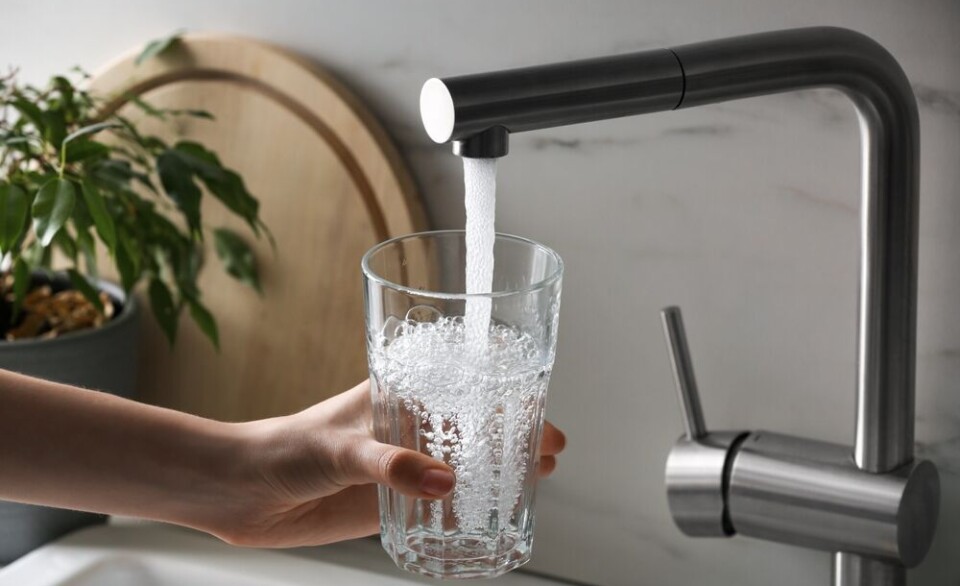-
The Paris region has one of France’s ‘most beautiful’ villages
It is an official ‘plus beau village de France’
-
Corrèze village was the last independent fiefdom in France
Turenne is known for its powerful history, hilltop views, and charming chateau
-
‘Breton Hogwarts’ chateau rebrands after Warner Bros warning dropped
Owner says name changed for marketing reasons
No drama for this French chateau restoration
Guillaume Picon enjoys the restored elegance on show at Château de Villette in Val d’Oise

When Château de Villette’s new owners arrived in 2011, they decided to undertake a complete restoration of the estate, encompassing the chateau, outbuildings, and gardens. In order to carry out these large-scale, ambitious plans, they enlisted the help of Pierre-André Lablaude, chief architect to the Monuments Historiques, and the interior decorator Jacques Garcia.
The present owners of the chateau have set out to restore it to its full magnificence, thus recreating the setting in which an inimitably French art de vivre was able to blossom so completely.
The interiors are now furnished with eighteenth-century pieces and objets, and the authenticity of the ambience had been enhanced by the use of precious fabrics, specially woven by skilled artisans, in the principal reception rooms and bedrooms.
Set in its gardens embellished with decorative parterres and water features, the Château de Villette is now revealed once again in its true splendour, a serene reflection of that moment of perfection that was France during the Enlightenment.
They wanted to decorate the interiors in a harmonious mixture of the various styles in vogue during the reigns of Louis XV (r. 1715–74) and Louis XVI (r. 1774–92). But above all they wanted to recreate an atmosphere or ambience: that of the art de vivre of eighteenthcentury France.
Their choice was fully justified by the history of Villette, as the most remarkable decorative schemes in this maison de plaisance built under Louis XIV date from the first half of the eighteenth century.
The dining room forms a unique ensemble that is not only of great aesthetic value but also bears witness to the emergence of a new social custom. Before this period, French aristocratic residences did not possess a separate dining room, and meals would be laid out on a table in the master’s bedchamber.
In the early eighteenth century habits changed, and people began to sit down to eat in a room that was specially designed for the purpose.
The dining room at Villette is an early example – if not the earliest – of this new development. Two niches decorated in the purest rococo style hold a pair of vases from which a supply of pumped water flows. The purpose of the stone table or buffet positioned against the wall was not to hold dishes of food brought from the kitchen, as might be assumed, but rather to display the owner’s silverware, an indication of his taste and social station.
Archaeological analysis of the wall panelling has revealed the original paint colours, contemporary interest in the “Orient,” and especially in China and chinoiseries.
The great maritime trading companies were now making a fortune from importing Chinese porcelain, lacquer panels, and other exotic items. With its large platters displayed on the walls and its porcelain vases standing on a commode and a console table, all in the rococo style, the dining room at Villette reflects this new taste.
Chinese porcelain forms a leitmotif throughout the chateau’s interiors, moreover. In the grand salon a pair of large pink porcelain basins from the reign of the Yongzheng Emperor (r. 1722–35) is displayed on giltwood plinths, while a very large porcelain vase topped by a guardian lion, or “foo lion,” stands in one of the corners of the music room.
The bathrooms, equipped with modern comforts, are in a similar style: one features lacquer panels; a second a Venetian mirror with a frame embellished with chinoiserie motifs, hanging above a commode that has been ingeniously converted into a washbasin; and an onyx bathtub weighing nearly a ton – an extravagant object that originally belonged to Esther Lachmann, known as “La Païva,” a courtesan who scandalized Paris under Napoleon III (r. 1852–70).
During the reign of Louis XV, which lasted for over half a century, the decorative arts developed and styles changed. The exuberant excesses of the rococo style, with its swooping curves and arabesques—as exemplified by the gilt-bronze wall clock in the dining room—became more restrained, and from the mid- 1750s there was a revival of the classical style, as espoused by Mme de Pompadour, the king’s mistress, and his brother the Marquess of Marigny, who was also director of the Bâtiments du Roi.
This turning point may be seen in the writing desk displayed in the library at Villette: made from amaranth and kingwood in the early 1760s by Jean-François Oeben, cabinetmaker to the king, it is a replica of the table Oeben made for Madame de Pompadour.
On the first floor, a commode that belonged to the Countess of Provence, sister-in-law of Louis XVI, offers another clear illustration of this “return to antiquity” in all its rigorous restraint and straight lines, which with the exception of the curve of the legs completely supplanted the swooping lines of the rococo.
“Textiles have an essential part to play in any refurbishment scheme,” as Béatrix Saule used to say when she was director of the Musée National des Châteaux de Versailles et de Trianon. This is certainly true at Villette. The fabrics used to line the walls of the bedchambers at Villette, as well as those used for the curtains and seat covers, were supplied by the Prelle textile manufacture, founded in 1752, which continues to uphold the great tradition of Lyon silk-making.
The firm’s archives contain samples of its fabrics manufactured since the eighteenth century, as well as a wealth of documentation enabling the manufacture to recreate designs from the Renaissance, the reigns of Louis XIII and Louis XIV, and the Regency. Among fabrics woven by Prelle is the crimson damask for the Antichambre du Grand Couvert at Versailles.
At Villette, they wove the crimson Ermitage silk velvet that lines the walls of the principal bedchamber on the first floor. On the ground floor, the boudoir is hung with damask in Turquin blue, including the curtains and canopy of the tester bed, which are picked out with sumptuous braid in silk and gold thread.
Get the look
Make like a French aristocrat with a modern take on Villette’s style with these French high street buys. Prices and availability correct at time of going to press.
Thé time
From a relaxing tisane to a cup of old fashioned builder’s tea, a cuppa always tastes better from a théière (teapot).
This one is Tutti Fiori, from La Redoute, price €19.
A good soak
Castle or no castle, nothing says ‘me time’ like a soak in a free standing bath (baignoire îlot).
This modern oval one from Leroy Merlin, which takes some filling, costs €1,090.
Green velvet
Not quite got the budget for an original Louis XV duchesse seat?
Fear not, you can recreate Villette’s drawing room elegance. This three-seater sofa in green velvet does the job. €1,149
























